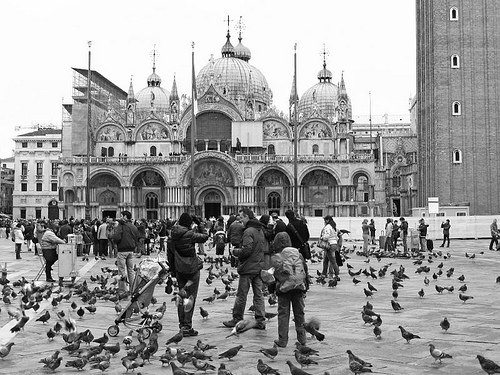Venice may be one of the top destinations in Italy for visitors, but it is not just the canals and romance of the old city that appeal to visitors, it’s the majesty of the ancient buildings and their timeless history that make such a terrific impact. Chief among these beautiful structures is one of the most popular destinations in Venice – St. Mark’s Basilica.
The Basilica di San Marco
The Basilica is located directly in the center of Venice’s main square, comprising a large portion of the surrounding space and providing an outstanding background to the huge number of pigeons and tourists that congregate in the square. The basilica, or church, dates back to the 11th century, but it was originally constructed in the footprint of an older church that stood in the same location. A church has stood in the location of the Basilica di San Marco for more than one thousand years.
In the 11th century, Venice was a major crossroad and port city between the East and West and this mix of cultures inspired the Byzantine design of the giant cathedral. Arches flourish along the rooftop and the many columns along the front of the church are mismatched. In fact, these columns were – in effect – trophies brought back other empires after being stolen away by traders.
St. Mark’s Remains
St. Mark’s Basilica isn’t just a large church building. It is also the home of the remains of one of the most important saints in the early Christian faith. St. Mark, the patron saint of Venice, was laid to rest in the church after his remains were spirited away from Egypt in the 9th century. The bones of St. Mark were thought to improve the importance of the city where he was ultimately laid to rest, and historians argue that this may have well been the case.
Despite its size and beauty, the Basilica di San Marco was not open to the public for hundreds of years. From the time of its construction until the 19th century, the basilica was used as a private cathedral for the rules of Venice, the Doges. Inside the rulers were able to enjoy the 40,000 square feet of mosaics created along the spectacular golden ceilings.
Small museums today inside the Basilica make it possible for tourists to enjoy the splendors of the museum while general admission to the museum is available for visitors to simply gaze upon the wonders of the impressive cathedral.



